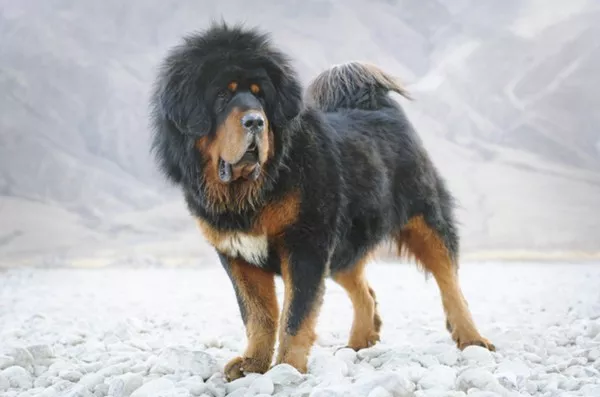Tibetan Mastiffs are a large and powerful breed of dog that originated in Tibet. They are known for their impressive size and protective nature. One of the most important aspects of owning a Tibetan Mastiff is understanding their physical characteristics, including their neck size. In this article, we will discuss the average neck size of a Tibetan Mastiff and what factors can affect it.
Physical Characteristics of Tibetan Mastiffs
Tibetan Mastiffs are a large breed of dog, with males typically weighing between 100-160 pounds and females between 70-120 pounds. They have a thick, heavy coat that can be black, brown, or gold in color. Their heads are large and square-shaped, with a broad and powerful jaw. Tibetan Mastiffs have a muscular build, with a broad chest and strong legs. Their necks are thick and powerful, which is an important characteristic for their protective nature.
Average Neck Size of Tibetan Mastiffs
The average neck size of a Tibetan Mastiff varies depending on their age, gender, and overall size. Adult male Tibetan Mastiffs typically have a neck circumference of 22-28 inches, while females have a neck circumference of 20-26 inches. However, it is important to note that these are just averages and individual dogs may have larger or smaller necks.
Factors That Affect Neck Size
There are several factors that can affect the neck size of a Tibetan Mastiff. These include genetics, nutrition, exercise, and overall health.
Genetics
Genetics play a significant role in the physical characteristics of Tibetan Mastiffs, including their neck size. Breeding dogs with good genetics can help ensure that their offspring have the desired physical characteristics, including a thick and powerful neck.
Nutrition
Nutrition is also an important factor in the physical development of Tibetan Mastiffs. A well-balanced diet that provides all the necessary nutrients can help ensure that they grow and develop properly. It is recommended to feed Tibetan Mastiffs a high-quality dog food that is appropriate for their age and activity level.
Exercise
Regular exercise is important for the overall health and physical development of Tibetan Mastiffs, including their neck muscles. Exercise helps maintain a healthy weight, which can reduce the risk of neck problems. It is recommended to provide Tibetan Mastiffs with at least 30 minutes of exercise per day.
Overall Health
The overall health of a Tibetan Mastiff is also important for their physical development, including their neck size. Regular veterinary checkups can help identify and treat any health problems that may affect their growth and development. It is also important to keep up with vaccinations and parasite prevention to maintain their overall health.
Neck Problems in Tibetan Mastiffs
Tibetan Mastiffs are prone to certain neck problems, including cervical vertebral instability (CVI) and wobbler syndrome. CVI is a condition where the bones in the neck become unstable, leading to pain and difficulty moving. Wobbler syndrome is a condition where the spinal cord is compressed, leading to weakness and difficulty walking. These conditions can be caused by genetics, nutrition, and exercise.
Preventing Neck Problems in Tibetan Mastiffs
Preventing neck problems in Tibetan Mastiffs requires a combination of proper breeding, nutrition, exercise, and veterinary care. Choosing a reputable breeder who conducts health screenings and genetic testing can help reduce the risk of inherited neck problems. Providing a well-balanced diet and regular exercise can help maintain a healthy weight and reduce the risk of neck problems. Regular veterinary checkups can help identify and treat any health problems that may affect their neck health.
Training and Socialization
Training and socialization are also important for the overall health and well-being of Tibetan Mastiffs. Proper training can help prevent behavior problems and ensure that they are well-behaved and obedient. Socialization can help prevent aggression and fearfulness towards strangers and other dogs. It is important to start training and socialization at a young age and to continue throughout their life.
Grooming
Grooming is also an important aspect of caring for Tibetan Mastiffs. Their thick coat requires regular brushing and grooming to prevent matting and tangling. It is also important to trim their nails regularly and to clean their ears to prevent infection.
Conclusion
In conclusion, understanding the physical characteristics of Tibetan Mastiffs, including their neck size, is essential for their overall health and well-being. Knowing the average neck size of a Tibetan Mastiff and what factors can affect it can help owners provide their dogs with proper care and attention. By choosing a reputable breeder, providing proper nutrition and exercise, and maintaining overall health, Tibetan Mastiffs can live a long and healthy life with a strong and powerful neck. Training, socialization, and grooming are also important aspects of caring for Tibetan Mastiffs. With proper care and attention, Tibetan Mastiffs can make wonderful companions and loyal protectors.


